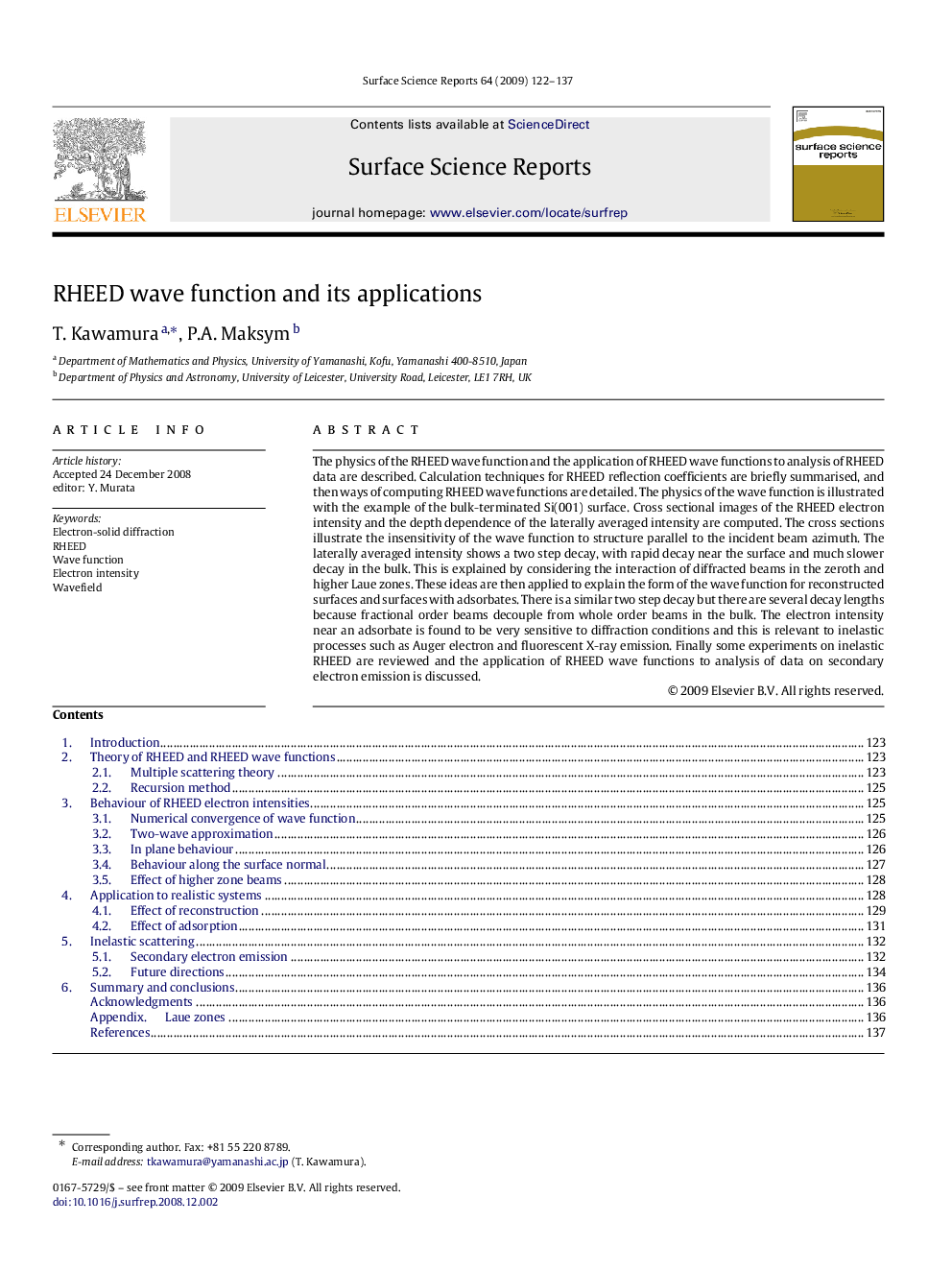| Article ID | Journal | Published Year | Pages | File Type |
|---|---|---|---|---|
| 7845483 | Surface Science Reports | 2009 | 16 Pages |
Abstract
The physics of the RHEED wave function and the application of RHEED wave functions to analysis of RHEED data are described. Calculation techniques for RHEED reflection coefficients are briefly summarised, and then ways of computing RHEED wave functions are detailed. The physics of the wave function is illustrated with the example of the bulk-terminated Si(001) surface. Cross sectional images of the RHEED electron intensity and the depth dependence of the laterally averaged intensity are computed. The cross sections illustrate the insensitivity of the wave function to structure parallel to the incident beam azimuth. The laterally averaged intensity shows a two step decay, with rapid decay near the surface and much slower decay in the bulk. This is explained by considering the interaction of diffracted beams in the zeroth and higher Laue zones. These ideas are then applied to explain the form of the wave function for reconstructed surfaces and surfaces with adsorbates. There is a similar two step decay but there are several decay lengths because fractional order beams decouple from whole order beams in the bulk. The electron intensity near an adsorbate is found to be very sensitive to diffraction conditions and this is relevant to inelastic processes such as Auger electron and fluorescent X-ray emission. Finally some experiments on inelastic RHEED are reviewed and the application of RHEED wave functions to analysis of data on secondary electron emission is discussed.
Related Topics
Physical Sciences and Engineering
Chemistry
Physical and Theoretical Chemistry
Authors
T. Kawamura, P.A. Maksym,
